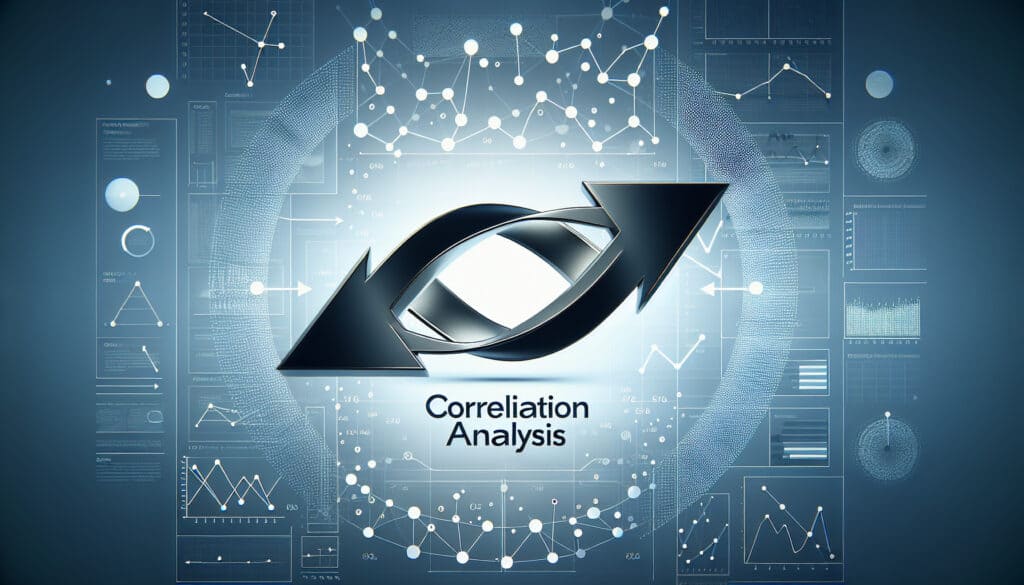A statistical méthode used to evaluate the strength and direction of the linear relationship between two quantitative variables.
- Méthodologies : Ingénierie, Qualité
Correlation Analysis

Correlation Analysis
- Amélioration continue, Amélioration des processus, Contrôle de qualité, Gestion de la qualité, Statistical Analysis, Contrôle statistique des processus (CSP), Tests statistiques
Objectif :
Comment il est utilisé :
- This technique is applied to a set of data points to determine if a change in one variable is associated with a change in another variable, represented by a correlation coefficient (r) from -1 to +1.
Avantages
- Identifies potential relationships between variables, which can be a starting point for further investigation; provides a single number to summarize the strength of the association.
Inconvénients
- Correlation does not imply causation; it only measures linear relationships and can miss more complex ones; it can be skewed by outliers.
Catégories :
- Économie, Lean Sigma, Résolution de problèmes, Qualité
Idéal pour :
- Identifying the statistical relationship between two variables, for example, between production speed and the number of defects.
Correlation Analysis finds extensive application in various industries such as manufacturing, healthcare, finance, and marketing, where understanding relationships between variables can drive significant improvements. In the manufacturing sector, it can aid in monitoring quality control by correlating production speed with defect rates; this allows engineers to adjust workflows and reduce defects. In healthcare, researchers often use correlation to assess relationships between patient factors, such as lifestyle choices and health outcomes, guiding public health initiatives. Within the finance industry, analysts may examine the correlation between economic indicators and stock market performance, helping to refine investment strategies. The methodology is particularly useful during the data analysis phase of projects, where teams comprised of data analysts, engineers, and domain experts collaborate to interpret findings and formulate hypotheses. The initiation of such analyses typically stems from a need to understand underlying patterns in data, prompting teams to gather information from diverse sources and implement statistical tools to identify significant correlations. This approach fosters a data-driven culture within organizations by enabling stakeholders to make informed decisions based on empirical evidence, ultimately identifying opportunities for innovation and improvement across various contexts.
Principales étapes de cette méthodologie
- Select the variables of interest for analysis.
- Calculate the correlation coefficient (r) using statistical software or tools.
- Interpret the correlation coefficient to determine the strength and direction of the relationship.
- Conduct hypothesis testing to assess the significance of the correlation.
- Examine the scatter plot to visually assess the relationship between the variables.
- Consider potential confounding factors that may influence the relationship.
- Investigate non-linear relationships if initial results suggest correlation.
- Document findings, including the correlation coefficient and significance levels.
Conseils de pro
- Utilize advanced statistical software to validate correlation coefficients and mitigate risks associated with spurious correlations.
- Incorporate control variables into your analysis to isolate the effect of the primary independent variable on the dependent variable.
- Consider using a sliding window approach for time series data to observe how correlation changes over different time intervals.
Lire et comparer plusieurs méthodologies, nous recommandons le
> Référentiel méthodologique étendu <
ainsi que plus de 400 autres méthodologies.
Vos commentaires sur cette méthodologie ou des informations supplémentaires sont les bienvenus sur le site web de la Commission européenne. section des commentaires ci-dessous ↓ , ainsi que toute idée ou lien en rapport avec l'ingénierie.
Contexte historique
1962
1970
1972
1980
1980
1986
1986
1960
1963
1970
1980
1980
1980
1986
1987
(si la date est inconnue ou n'est pas pertinente, par exemple "mécanique des fluides", une estimation arrondie de son émergence notable est fournie)















Articles Similaires
Questionnaires sur les troubles musculo-squelettiques
Tests à plusieurs variables (MVT)
Analyse de régression multiple
Systèmes de capture de mouvement
Méthode MoSCoW
Test de la médiane de Mood